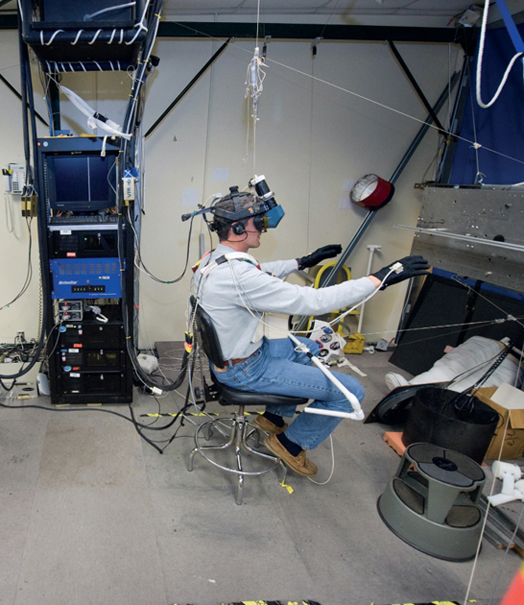1985
Virtual Reality
Jaron Lanier (b. 1960)
Engineers and the engineering mindset have been helping people cope with the real world for centuries. But virtual reality promises to let us experience artificial worlds as if they were real.
The technology needed to create a virtual reality experience has four parts. First, you need a headset that can display binocular three-dimensional images into your eyes. Second, you need a way to track head movement accurately and responsively. Third, you need a piece of software that can create the artificial world that you will be experiencing. Fourth, you need a way to move around in that world—it could be as simple as a video game controller or as complex as an omnidirectional treadmill.
When virtual reality started in 1985, all of these components were fairly crude. Computer scientist Jaron Lanier had popularized the term and his company, VPL Research, was working on producing virtual reality products for commercial use. What has been happening since is a set of big engineering improvements in Lanier’s earlier inventions. The headsets have better resolution, a wider field of view, and a peripheral view. This means that the images fill your entire visual field and it makes the experience more immersive. Head tracking accuracy and speed have also improved. So when you move your head, the display responds instantly and exactly. This again improves immersion. And software engineers in the gaming industry have used ever-increasing CPU and GPU power to create hyperrealistic artificial worlds to feed into the headset at a full 60 frames per second. And the cost of everything has come down significantly.
Putting all of these advancements together, the virtual reality experience is improving all the time. Gaming will be transformed, but there are also things people will be able to do virtually that would have previously been impossible. Have you ever wondered why the visit to a mall, museum, show room, or tourist attraction feels so much richer than a video of the same thing? Soon you’ll be able to get an immersive visual experience or move your head to see what you want to see. New virtual reality systems will fix that and will make virtual experiences seem nearly identical to the real thing.
SEE ALSO 3D Glasses (1953), Doom Engine (1993), Toy Story Animated Movie (1995).

Astronauts use virtual reality hardware to rehearse some of their duties on the upcoming mission to the International Space Station.